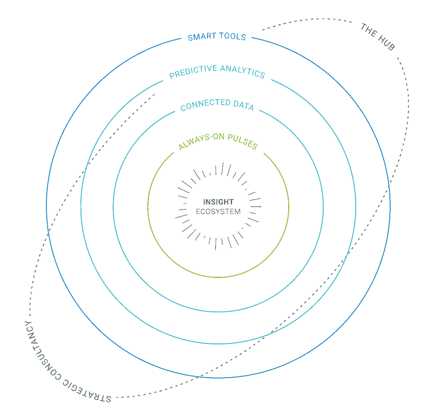As you drive through the leafy countryside of Warwickshire, on your way into Royal Leamington Spa, there’s a pleasant but innocuous row of houses that represent the typical early-1990s new builds of middle England. The development is notable for nothing on the surface, but perhaps in time there will be a blue plaque placed there, for this is the late-1970s birthplace of brand tracking research as we know it.
Before the builders moved in, this spot was home to the humble beginnings of an idea – from two marketing executives at General Foods – that grew into the most successful market research methodology ever invented. Mr Millward and Mr Brown saw an opportunity to create a service that would solve the gap in their decision-making capability: we know what we’re spending on marketing, and we know how much money we’re making, but we’ve absolutely no idea what happens in between those two points – so we can’t fix mistakes or do things better to make more money, more effectively.
If we’re being true to the idea of the blue plaque, then perhaps the full story is only told when we add a second date to mark the death of tracking as we know it. While it probably won’t be today, the patient is definitely in intensive care and looking like they won’t make it out alive, or at least without major surgical intervention and extensive plastic surgery. Whatever emerges won’t be recognisable, and that’s something we should all be celebrating.
Cause of death: data. The entire point of a tracking study was to try and know the unknowable. To understand what people were seeing, feeling, thinking and doing in the absence of any other data beyond spend and sales. Over time though, it became not the means to an important end, but the end in itself. To have a tracker was almost as important as what you did with it. A security blanket of information … just in case. They became long, arduous and inflexible.
We can retain control of the consumer insight conversation and keep our clients running at the same speed as their customers
Because the industry didn’t reimagine quickly enough, clients started calling it out. How many decisions were they making based off ‘the tracker’? “Very few”, was the cruel, but fair, response. And largely because they now had the missing information they used to rely on the tracker for: the eyeballs, the hits, the clicks, the transactions. Under close scrutiny the value for money from the tracker didn’t hold up against all the other investments they needed to make to get a handle on all the new data. And why spend so much on insight when the marketing teams could get their hands on the same data, faster, and respond to it in real time? The scales were falling from the eyes of the budget holders.
No more then, the necessity for such insight? Not quite. While the need for tracking as envisioned by Maurice and Gordon some forty years ago is dying, the requirement for clients to have continuous insight so they can make marketing decisions in real time is more important than ever.
The transformation is underway. From the idea that one single source of primary market research will tell you everything, to an ecosystem powered by data and insight – where it’s more important to connect data smartly than it is to collect data efficiently. Where always-on pulses around the brand metrics that matter are joined together with social pulses to see what the world is organically saying, customer pulses where transactional data shows us what everyone is doing, and communications and experience pulses that measure media effectiveness in the right way, at the right time, with the right method. Hint: these are not 25-minute online surveys.
This ecosystem is a place where, once all the relevant data is connected, predictive analytics maps the current reality and shows the pathways to follow to maximise future success. And ultimately predicting the future by providing clients with real-time market simulators where scenarios can be played out in a safe environment before money is spent on the real thing.

As insight practitioners, we remain in charge of the why. Everything in this ‘data is the new oil’ world shows us all of the whats that traditional tracking used to do, but it doesn’t tell us the whys. We can now surround our connected core with smart tools that harness always-on communities, mobile, AI and NLP to give us the ability to survey hundreds of people in minutes, conduct focus groups at scale in hours, or run experience ethnographies in days.
This means that at Hall & Partners we can retain control of the consumer insight conversation and keep our clients running at the same speed as their customers. Fresh and focused insight – provided in real time via The Hub (our pioneering insight news service) – has more impact in the organisation and allows marketers to make the decisions they need to. And with less time spent on manually collecting and reporting data, more time can be spent on connecting it and spending time with our clients, offering the kind of higher-value strategic advice that can truly have an impact on changing a brand’s fortunes.
For the agencies and clients daring enough to adopt and adapt this new kind of ecosystem, there’s a brave new world of continuous insight to enjoy, and a completely new approach to breathing life into the old tracker. We could then drive back past our mythical blue plaque in the Midlands that celebrates ‘the birth and death of tracking’, and scrawl at the bottom, “hang on a minute…”.








